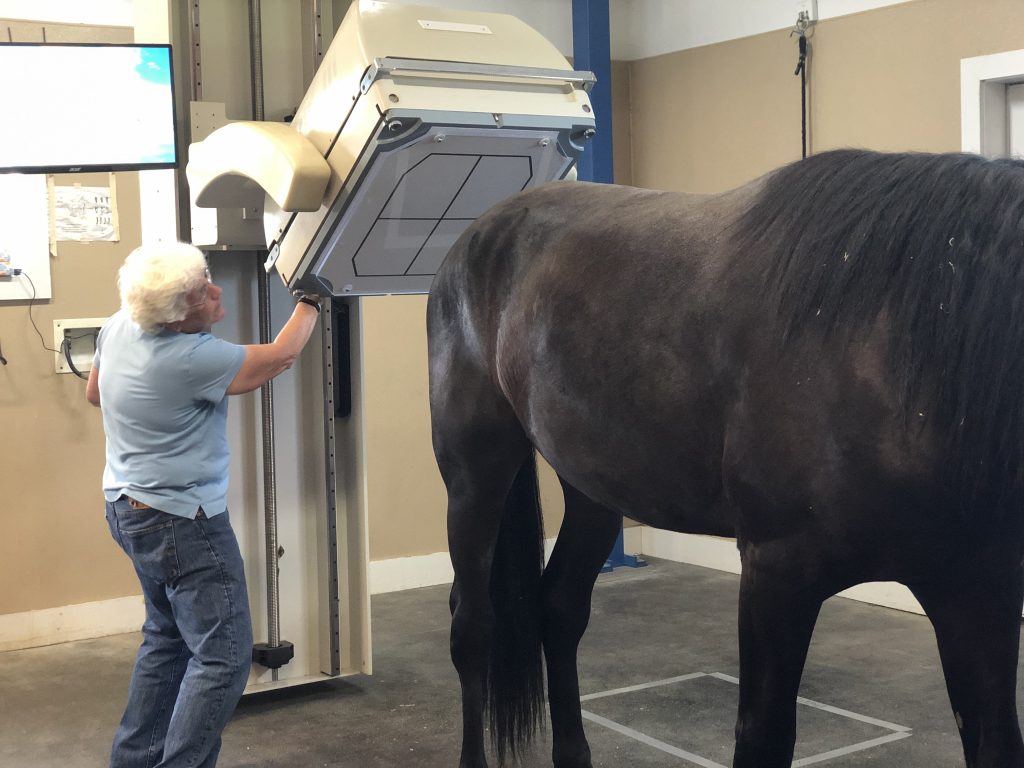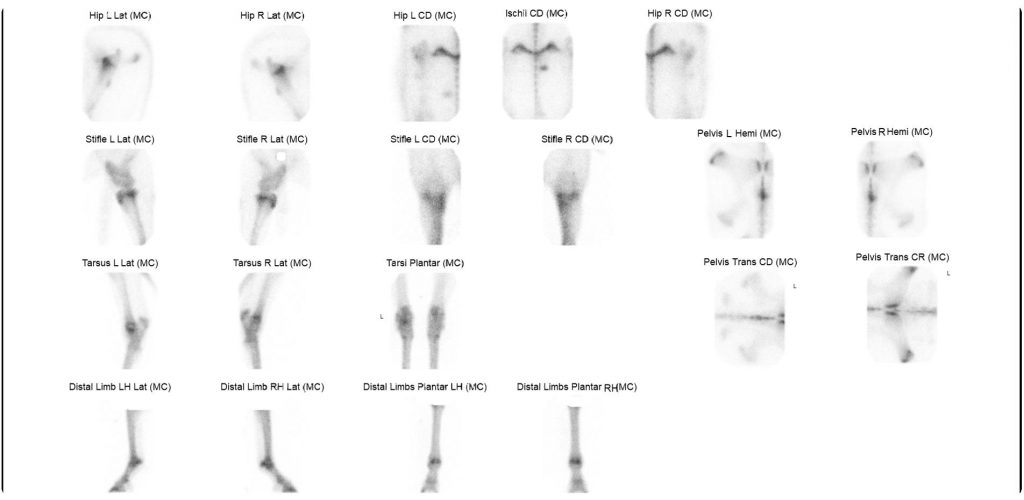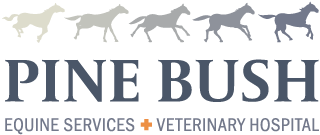Nuclear Scintigraphy is commonly called a bone scan. Bone scans are very sensitive ways to image orthopedic conditions in the horse. The technique uses a biologically safe radioisotope combined with a compound used by bone to target areas where there are bony changes or where the bone is actively forming, such in areas of injury or fracture. This compound, known as a radiopharmaceutical, is injected into the bloodstream of the horse and then a special camera, called a gamma camera, is used to image the musculoskeletal system. Abnormal areas, called lesions (or areas of increased radiopharmaceutical uptake) are seen as “hot” or “cold” spots on the images. These images can be viewed on a monitor or printed on paper. Bone scans are especially useful in helping to diagnose lameness conditions when there are multiple limbs involved, when radiographic images (x-rays) do not show a lesion, when the horse is not lame enough to block, or the lameness does not block out with routinely used nerve blocks, or early, long before the injury can be seen even on digital radiographic images. Bone scans can be vital to image areas of the skeleton of which radiographic images are difficult to take the pelvis, the thoracolumbar spine, the ribs and shoulders regions. Whole-body images can be taken in the standing horse avoiding the need to use general anesthesia.
Nuclear scintigraphy can also be used to diagnose exercise related bone changes, tumors, vascular abnormalities and abscesses. Using the radioisotope with different binding compounds that target different areas of the body, nuclear scintigraphy can help diagnose urinary tract abnormalities and certain soft tissue tumors.
Dr. Mike Ross heads up the Nuclear Scintigraphy and Sports Medicine program at Pine Bush Equine Services and Veterinary Hospital. He has over 38 years of experience and dedication to the diagnosis and management of lameness in the horse and established the well-known nuclear medicine program at the University of Pennsylvania where he was the director of that program until 2018. He is the author of over 420 scientific papers, books, proceedings, abstracts and book chapters. Ross and Dyson’s lameness textbook with companion CD, Diagnosis and Management of Lameness in the Horse. published December 2002 by WB Saunders (Elsevier Science), and now the 2ndedition, with a companion website,www.rossanddyson.com published November 2010 is the culmination of over 37 years of study and interest in clinical examination, imaging and management of the lame horse. Ross and Dyson were recognized for that work by the Association of American Publishers for outstanding achievement in Professional and Scholarly Publishing (2003 award in the field of nursing and allied health).
There are other hospitals with the capability to do bone scans but Pine Bush Equine is proud to have one of the most experienced veterinarians in nuclear scintigraphy in the world heading up their program.
If you are interested in finding out answers to the lameness and performance issues in your horse, you can schedule an appointment by calling 845-361-4917 or emailing your questions to [email protected]. Nuclear scintigraphic examination requires your horse stay overnight in our hospital and can be combined with comprehensive lameness examination and management .

Adjusting the Gamma Camera to image the pelvis of the horse.

Bone Scan images of the hind end of the horse.
